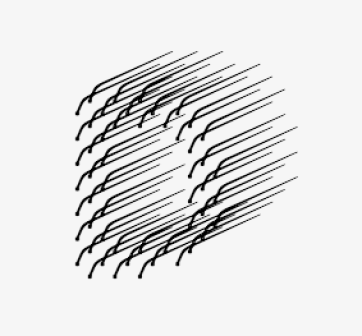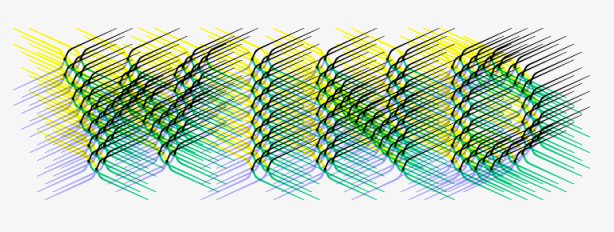This post comes from the Artists and Climate Change Blog
Amsterdam-based book and graphic designer Hansje van Halem just designed her first published typeface, and she named it WIND.
Those who follow this monthly column on renewable energy art know that I am a sucker for anything and everything WIND. To celebrate the end of my first year writing this monthly series for Artists and Climate Change about a wide range of renewable energy artists – including musicians, poets, architects, engineers – here is a brief introduction to Hansje van Halem and her playful capital-only multi-layered variable font, WIND. (More technical information on van Halem’s WIND font can be found here.)

According to Typotheque, which published van Halem’s new font, her work is “highly experimental†and “uses vivid colours and intricately detailed patterns to create unexpected optical illusions… its various layers can be combined and overlaid to create vibrant, hypnotic patterns.â€
WIND is available in four styles, defined by the cardinal wind directions: NE, SE, SW, NW
In an email exchange, van Halem explained to me that “WIND was created while playing with shapes.â€Â Although she did not set out to create a new typeface inspired by one of the Netherland’s most plentiful natural resources, the name WIND became obvious when “we saw what was happening visually.â€
Here is a close up of the letter “D†using NE winds:

As an example, I have pasted below four versions of the same word, starting with NE winds, then progressively overlaying a new cardinal direction to each version:




The combinations of style and color are endless! I encourage you to play around on the Typotheque website experimenting with this delightful font. But be forewarned: it is addictive!
“I am very curious to find out what other designers will discover with the playful functions of this layered type,†explained van Halem. “I would love to see WIND being used as animated lettering…. I can imagine that the font could be connected to real time wind-data like wind strength and wind direction and displayed as such on use for screens.â€
Trieste’s Wind Museum has already tried its hand with the WIND font, posting recently on Twitter :

The WIND font is van Halem’s second wind-related artwork. In 2014, she designed 16 perforated sliding sun screens with wind-flow patterns for a new school building in Amsterdam North in collaboration with Berger Barnett Architects.Â
At the end of our email conversation, when asked what gives her hope for the future in the context of climate change, van Halem replied “As a kid I grew up with the idea mankind is ruining and eventually killing the world. After seeing the elasticity of nature in areas like Chernobyl, I believe in the power of nature and its everlasting search for regaining balance. I choose to believe that earth will survive mankind, which to me is a very soothing thought.â€
______________________________
Joan Sullivan is a renewable energy photographer based in Québec, Canada. Since 2009, Joan has focused her cameras (and more recently her drones) exclusively on solutions to climate change. She is convinced that the inevitable transition to a 100% clean energy economy will happen faster – and within our lifetimes – by creating positive images and stories that help us visualize and embrace what a post-carbon future will look like. Joan collaborates frequently with filmmakers on documentary films that explore the human side of the energy transition. She is currently working on a photo book about the energy transition. Her renewable energy photos have been exhibited in group shows in Canada and the UK. You can find Joan onTwitter and Instagram.
Artists and Climate Change is a blog that tracks artistic responses from all disciplines to the problem of climate change. It is both a study about what is being done, and a resource for anyone interested in the subject. Art has the power to reframe the conversation about our environmental crisis so it is inclusive, constructive, and conducive to action. Art can, and should, shape our values and behavior so we are better equipped to face the formidable challenge in front of us.


